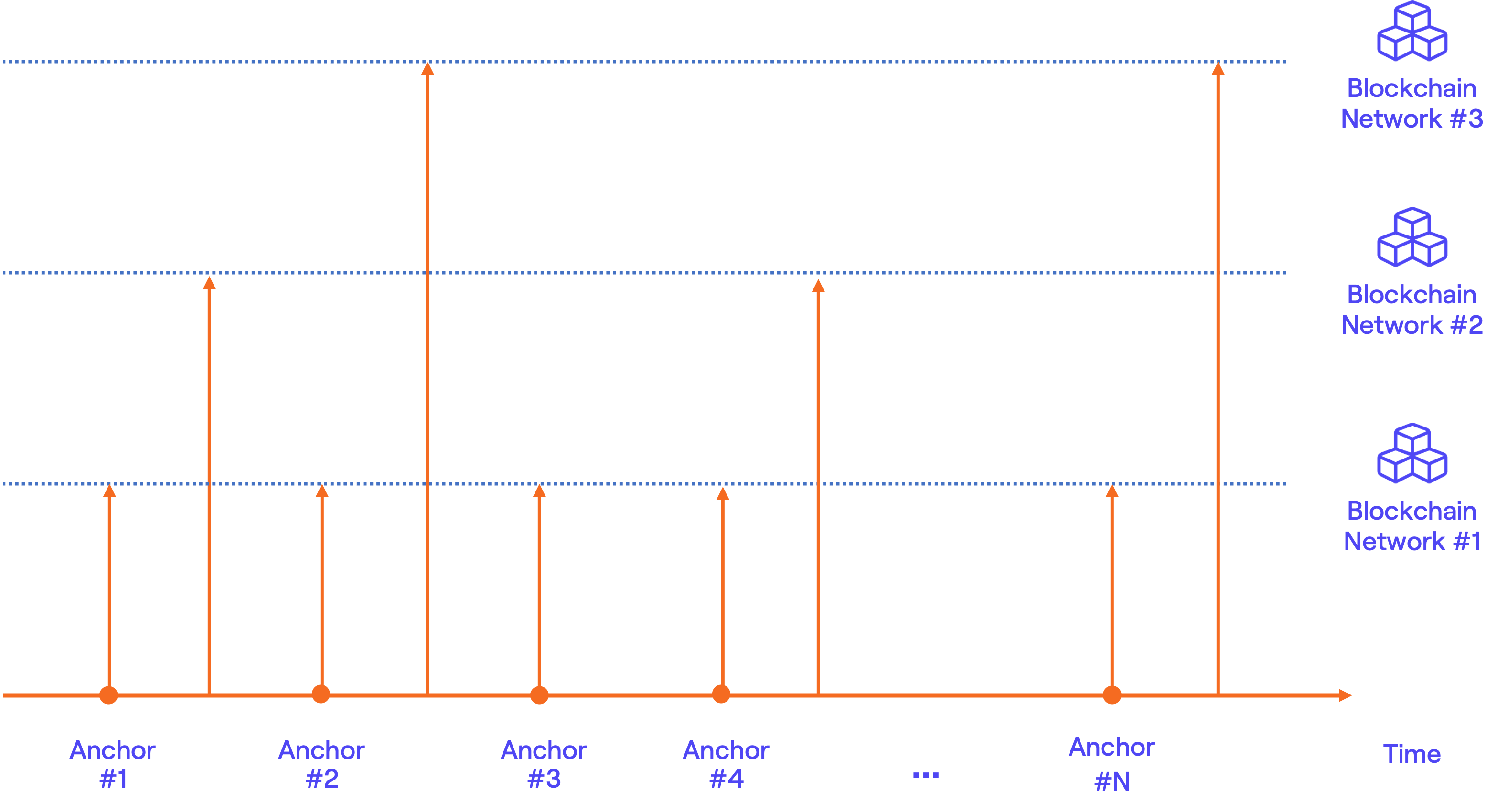The anchor entity
As described in the Protocol Overview, we use a set of sparse Merkle trees that forms our Rollup. Once you send some data, it gets enqueued until we trigger the anchor mechanism.
This process consists in getting all the pending data and adding them to the state tree. This will produce a state transition and the resulting root will be transacted into several blockchain networks following the time intervals described in the Networks supported section.
As a more formal definition: An anchor is a snapshot of the state tree which is registered to the blockchain protocol. It is formed by the resulting state of the state transition.
Anchor identifier
We identify anchors with sequential numbers starting from 1. When you send a new data for certification, you will receive the anchor identifier in which your data will be processed, usually this is the next available one.
Relation of anchors with blockchain networks
It's important to note that not all the anchors processed are transacted into all the blockchain networks supported by BLOOCK. This means that if you directly query some root of a random anchor into a network, it's possible (and common) that the result is not found. This is because we have different transaction intervals for the different networks supported. However, we do guarantee that every anchor gets transacted to at least one network. The integrity proof retrieval process manages this so you don't get an integrity proof that results in a root not transacted to the selected network. For a better understanding of this topic, here's a diagram of how anchors and transactions work together:
